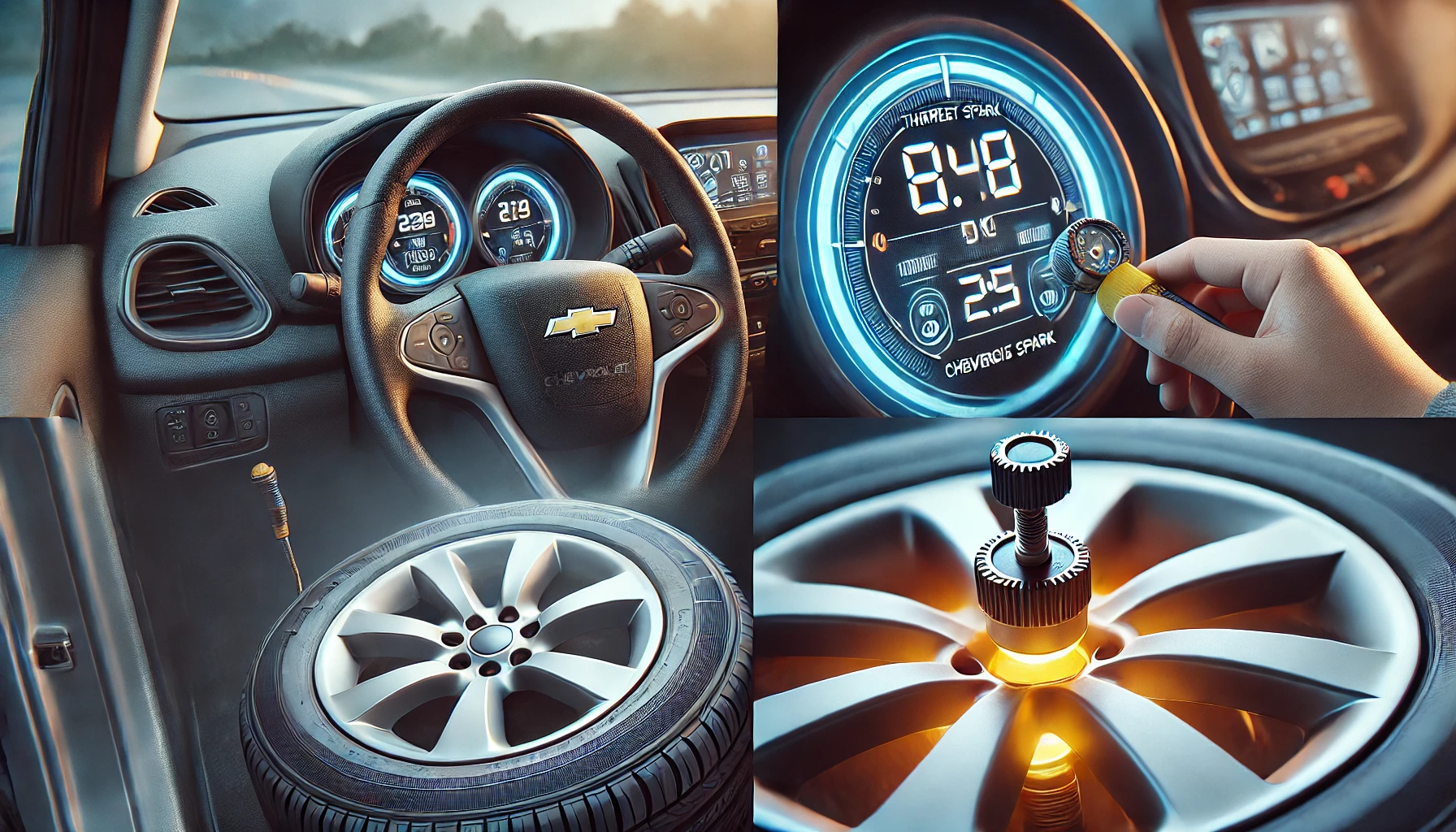
Chevrolet Spark Tire Pressure Sensor Fault: Step-by-Step Guide
The Chevrolet Spark is equipped with a TPMS (Tire Pressure Monitoring System) that alerts you when tire pressure is low or if there’s an issue with the sensor itself. Here’s a structured approach to troubleshoot this fault.
1. Check and Correct Tire Pressure
- Verify Tire Pressure: Use a tire pressure gauge to measure each tire’s pressure. Check the driver’s door frame or your owner’s manual for the recommended PSI levels.
- Inflate or Deflate as Needed: Adjust the pressure accordingly and drive the vehicle for about 10-15 minutes, giving the TPMS time to recalibrate.
2. Resetting the TPMS on a Chevrolet Spark
- Ignition On, Engine Off: Start by turning the key to the “On” position without starting the engine.
- Activate TPMS Reset Mode: Press and hold the TPMS reset button (often located beneath the steering wheel) until the tire pressure light blinks three times, indicating that the system is in reset mode.
- Drive to Recalibrate: Drive the car for about 10-15 minutes above 20 mph to allow the TPMS to detect all sensors properly and potentially clear the error.
3. Inspect Each Tire Sensor and Valve Stem
- Check Sensor and Valve Stem Condition: Over time, the sensors and valve stems can get damaged or corroded, especially if you’ve recently had tire work done.
- Sensor Battery Check: TPMS sensors typically last 5-10 years, and if you have an older model, a sensor’s internal battery might be depleted. Replacing the sensor should fix this.
4. Diagnostic Test for Faulty Sensor
- TPMS Diagnostic Tool: Using a diagnostic tool at an auto shop can help identify which sensor, if any, is causing the fault.
- Replace Faulty Sensors: If a sensor is indeed faulty, replace it with a compatible TPMS sensor for Chevrolet vehicles to ensure optimal function.
5. Software Updates
- Some Chevrolet Spark models may benefit from a software update to fix TPMS-related glitches. Check with your local dealership to see if any updates apply to your vehicle.
When to Contact a Mechanic
If these steps don’t clear the fault, there may be a more complex issue with the TPMS module or the vehicle’s electrical system, requiring professional diagnosis.
